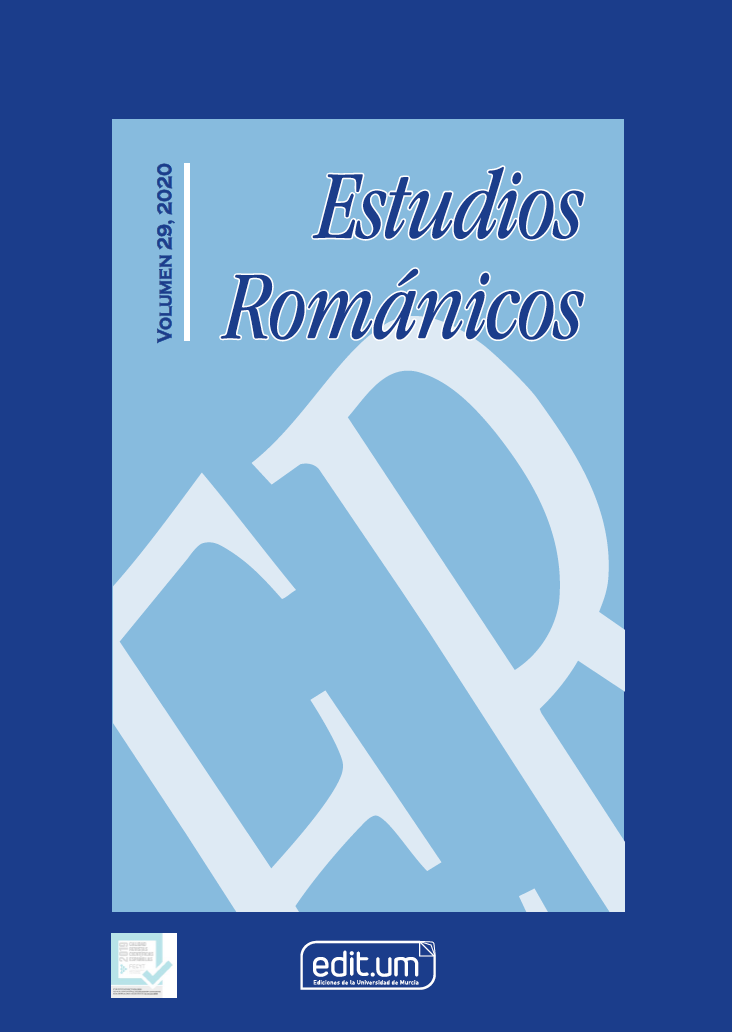Bove in the maze. A reading of Le Piège
Abstract
The rediscovery of Emmanuel Bove from the 1980s onwards drew attention above all to his early works, notably Mes amis. However, the novels published after the war, far from the subjects dear to the author, remain less famous. The reading of The Trap is used to show that, without abandoning his style and his way of looking at the world and describing it, Bove succeeds in immersing us into the dark universe of the Occupation. We thus witness the failure of the Bove anti-hero who for once is acting yet setting himself too ambitious a goal, and while trying to defeat the occupying monster he perishes in the occupied France labyrinth. Moreover, the labyrinth as a formal structure becomes a recurring element in the novel.
Downloads
-
Abstract417
-
PDF (Français )400
References
BOVE, Emmanuel (1991[1945]): Le piège. Paris : Gallimard (coll. L'imaginaire, 267).
BRAVARD, Olivier (2003): «Fatalisme et héroïsme». Europe Revue Littéraire Mensuelle, 895-96: 17-31.
BRAVARD, Olivier (2003b: «L'hypothèse dans Le piège d'Emmanuel Bove», S. Coste ; D. Carlat (éds.). Lire Bove. Lyon: Presses Universitaires de Lyon, 275-282.
COUSSE, Raymond; BITTON, Jean Luc (1994): Emmanuel Bove : la vie comme une ombre : biographie. Bordeaux : Castor astral.
CRESCIUCCI, Alain (2001): «Oubli de Bove?», Roman 20-50. Revue d'Etude du roman du XXe siècle. 31: 85-93.
EYCHART, M. Thérèse (2003): «Le piège ou comment écrire l'Histoire», S. Coste ; D. Carlat (éds.). Lire Bove. Lyon: Presses Universitaires de Lyon, 261-274.
GENETTE, Gérard (1972): Figures III. Paris: Éditions du Seuil (coll. Poétique ).
GENETTE, Gérard (1983): Nouveau discours du récit. Paris: Éditions du Seuil (coll. Collection Poétique).
LOVITO, Giuseppe (2013): «Le mythe du labyrinthe revisité par Eco théoricien et romancier à des fins cognitives et métaphoriques », Cahiers d’études romanes. 27: 345-357.
MOREL, Geneviève (2012): «Emmanuel Bove : l'homme piégé», Savoirs et clinique, 15, 1: 22-31.
OAKES, Elizabeth (1948): «Review Le piège by Emmanuel Bove», Books Abroad. 22, 3: 279-280.
OUELLET, François (1995): «L’Altérité subjective d’Emmanuel Bove – le Cas du Piège», Études littéraires. 27, 3:101-109.
OUELLET, François (1998): D'un Dieu l'autre : l'altérité subjective d'Emmanuel Bove : essai. Québec: Nota bene. (coll. Collection Littérature(s) ; 12e.).
OUELLET, François (2005): Emmanuel Bove : contexte, références et écriture. Québec, Nota Bene.
PERYRONIE, André (1988): «Labyrinthe», P. Brunel (éd.), Dictionnaire des mythes littéraires. Paris: Editions du Rocher.
POIRIER, Jacques (2009): «Perdre le fil: labyrinthes de la littérature française moderne», Amaltea. Revista de Mitocrítica. 1: 215 - 226.
RENARD, Paul (1987): « Emmanuel Bove : de la sollicitation et de l’absence », Roman 20-50. Revue d'Etude du roman du XXe siècle. 3: 109-123.
Copyright (c) 2020 Études Romanes

This work is licensed under a Creative Commons Attribution-NonCommercial-ShareAlike 4.0 International License.
Las obras que se publican en esta revista están sujetas a los siguientes términos:
1. El Servicio de Publicaciones de la Universidad de Murcia (la editorial) conserva los derechos patrimoniales (copyright) de las obras publicadas, y favorece y permite la reutilización de las mismas bajo la licencia de uso indicada en el punto 2.
2. Las obras se publican en la edición electrónica de la revista bajo una licencia Creative Commons Reconocimiento-NoComercial-SinObraDerivada 3.0 España (texto legal). Se pueden copiar, usar, difundir, transmitir y exponer públicamente, siempre que: i) se cite la autoría y la fuente original de su publicación (revista, editorial y URL de la obra); ii) no se usen para fines comerciales; iii) se mencione la existencia y especificaciones de esta licencia de uso.
3. Condiciones de auto-archivo. Se permite y se anima a los autores a difundir electrónicamente las versiones pre-print (versión antes de ser evaluada) y/o post-print (versión evaluada y aceptada para su publicación) de sus obras antes de su publicación, ya que favorece su circulación y difusión más temprana y con ello un posible aumento en su citación y alcance entre la comunidad académica. Color RoMEO: verde.












